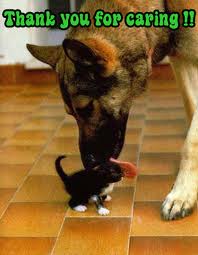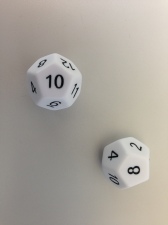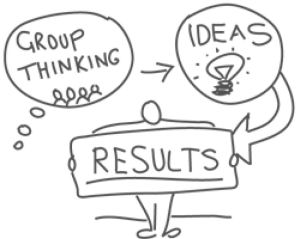Monthly Archives: January 2014
Part 2: the 2nd principle that drives human life
I *love* this man!!
In an earlier post, Part 1: Identifying the problems, I discussed how Ken Robinson’s video is helping education by shining a light on the problems, identifying the 3 principles that drive human life, and then he offers an existing solution. The first principle is about individuality.
Robinson explains the 2nd principle this way:
2nd Principle that drives human life is curiosity. If you can light the spark of curiosity in children they will learn without any further assistance. Children are natural learners. It’s a real achievement to put that ability out or to stifle it. Curiosity is the engine of achievement.
This is the true goal of an educator: to encourage students’ curiosity. The teacher needs to create a climate of curiosity for his/her subject matter. If the teacher does that, the majority of students will embrace what’s being taught because they are naturally curious. Unfortunately, I have some…
View original post 1,010 more words
ARTEMiS – Using Art to Visualize Scientific Concepts
ARTEMiS, which stands for “ART for Engineering, Mathematics and Science”, is an initiative at MIT that uses visualizations to enhance the teaching and learning of scientific concepts. Below is a quote about the goals of ARTEMiS.
ARTEMiS stands for ART for Engineering, Mathematics, and Science, and our goal is to enhance teaching and learning through high-quality visualizations. We apply the principles of visual communication and use the tools of modern computer graphics to create visualizations that accurately portray scientific and technological concepts, while also meeting high aesthetic and artistic standards. And we strive to empower educators and students with the knowledge and skills to create such visualizations.
“We especially need imagination in science. It is not all mathematics, nor all logic, but it is somewhat beauty and poetry.”
– Maria Montessori
Rose Window Geometry
Ah – the glories of learning off the computer! Could there be a more exhilarating way to see in a quick moment all the geometric wonders involved in those wonderful Cathedral windows of old? (Perhaps it is because I have learned to love Math so very much, that this is so astounding to me!)
This week for our Art Day on Wednesday, we looked at the details of the Rose Window in Gothic Architecture, and then tried our hands at drawing some. As simple as this example makes it look, getting all the lines in the right places to make anything beautiful is much harder than it seems. We struggled with inadequate tools. Honestly, how the makers of school compasses can sleep at night is beyond me. Those things are so flimsy there is no way a kid can learn to make a circle to be proud of, let alone…
View original post 369 more words
Math Dice Game
My mom bought me this little game called “Math Dice” for Christmas this year. Have you heard of it? I hadn’t, and truth be told, I’m not sure my mom realized it was a game she was buying it for me.
When I opened the package she said “I thought you could do something creative with those dice and your math blog.” In the days after Christmas, I scooped the unopened box of dice into our “junk drawer” (sorry mom) and rediscovered them this weekend while cleaning. On the back the of the box were the directions to the “Math Dice Game.”
This morning I had a little extra time, so I thought I’d give the game try!
Step One: Roll the 12-sided target dice
Step Two: Roll the three 6-sided scoring dice. Combine the three scoring dice in anyway to match or come closest to the Target Number.
Ummm…
View original post 119 more words
Video Lecture from Hillsdale College: Story Killers
Dr. Terrence Moore of Hillsdale College speaks in this video about the Common Core standards in a college lecture entitled “Story-Killers: How the Common Core Destroys Minds and Souls”.
The architects of Common Core, Dr. Moore contends, are deliberately killing stories.
But why?
First Dr. Moore discusses what Common Core leaves out, in great detail. Then he asks (at minute 16:50) “what kind of mind, indeed what kind of soul will you have after going through this sort of stuff [Common Core high school]?”
He answers. This is the part we must hear.
“Nothing but mischief” is what students are learning that our country has been up to for over two centuries; and, that the past is a dark cloud that has nothing to teach us.
“No appreciation for beauty or heroism or faith” is what students will hold –because they will most likely never have discussed such things…
View original post 835 more words
EDU 520: CoPs & PLCs (Communities of Practice & Professional Learning Communities)
CoPs and PLCs essentially are the same thing. They are groups of people who come together to learn from each other and to share what they know. They can differ in the ways they are implemented or their topics of focus. CoPs have been around since humans have walked the earth, and can be found everywhere; though the term is widely adopted in Corporate America. PLCs, on the other hand, are often found in educational environments.
CoPs and PLCs are excellent conduits for learning. The concept of learning is reinforced when humans are in a group setting; surrounded by those with similar interests. People can feed off of each other, because one can offer up ideas and thoughts and share them with the other members of the group. Learning takes place by the sheer interaction of people working together. People in a CoP or PLC can then take what they have learned from the group meetings and effectively influence their coworkers or their students outside of the group. Co-workers and students will then, in turn, learn from what they have been taught. People will then go back to the CoP or PLC and share anything new they, themselves, have learned, and the process continues. DuFour argued that (as cited in Graham, 2007), “When teachers work together to … help each other develop and implement strategies to improve current levels of student learning, they are engaged in the kind of professional development that builds teacher capacity and sustains school improvement”. Students, teachers, and administrators all benefit from this collaboration.
I am a huge fan of the PLC model, since I work in Higher Education in both an administrative and teaching capacity. I could see how PLCs could benefit staff, faculty, and students alike. Ever since reading about PLCs for this assignment, I have begun to think about how I could create one for faculty teaching the Math 099 & 101 (Elementary & Intermediate Algebra) classes at CCSU. We currently have a Center for Teaching & Faculty Development that holds talks and discussions about various topics of interest. I would like to start a PLC with a more stream-lined focus – that of sharing and discussing teaching practices for 099/101. How can I be a better algebra instructor? What can I do to teach these courses and exhibit my academic freedom while still adhering to the CCSS? Do online quizzes work in the class or do in-person ones seem to work better? Are students taking advantage of the free online questions? The questions posed are numerous. I would love to work to make discussions like this happen. Sharing of information is never a bad thing. I’m still working out the details….
Technology has come a long way, and Web 2.0 can influence CoPs and PLCs positively and negatively. Social networking tools, like Facebook, LinkedIn, and MySpace, can all be used to find and connect with people that share a similar interest. This can be beneficial when creating or starting a CoP or PLC, as it cuts down on the time to find people with similar interests. Gunawardena, Hermans, Sanchez, Richmond, Bohley & Tuttle (2008) contend that “Web 2.0 tools foster interaction, collaboration, and contribution” (p. 5). Users can create, edit, construct and then share material (documents/images/spreadsheets, etc.) among other members of a group. This can be extremely helpful, especially if members of your group are geographically located a distance away from each other. On the other hand, having members spread out across continents can possibly lead to isolation since members do not have to actually physically meet in person. People working online may also get easily distracted and not get as much work done as they had hoped. Groups work best when everyone in the group pulls their own weight. If one person in the CoP or PLC is not doing their share of the work, the learning that could take place among all members might not be happening to its fullest potential.
What can I do to help me get started with creating a new educational PLC for my fellow 099/101 teachers? What approaches should I take? Should I just focus on ONE topic?
Some Useful Links:
What is a PLC? http://www.ascd.org/publications/educational-leadership/may04/vol61/num08/What-Is-a-Professional-Learning-Community%C2%A2.aspx
CoP Design Guide. http://net.educause.edu/ir/library/pdf/nli0531.pdf
REFERENCES:
Bouchard, J. (2012). EDU520 Unit 3 CoP, PLC [Video file]. Retrieved from http://www.youtube.com/watch?v=6Pg3cx7dW1U&feature=youtu.be
DuFour, R., DuFour, R., Eaker, R., & Many, T. (2014). AllthingsPLC. Retrieved from: http://www.allthingsplc.info/about
Graham, P. (2007). Improving teacher effectiveness through structured collaboration: A case study of a professional learning community. Research in Middle Level Education Online, 31(1), 1-17.
Gunawardena, C., Hermans, M. B., Sanchez, D., Richmond, C., Bohley, M., & Tuttle, R. (2008). A theoretical framework for building online communities of practice with social networking tools. Educational Media International, 46(1), 3-16.
Wenger-Trayner, E. (2014). Intro to communities of practice. Retrieved from: http://wenger-trayner.com/theory/








![photo[3]](http://katedegner.files.wordpress.com/2014/01/photo3.jpg?w=300&h=225)


